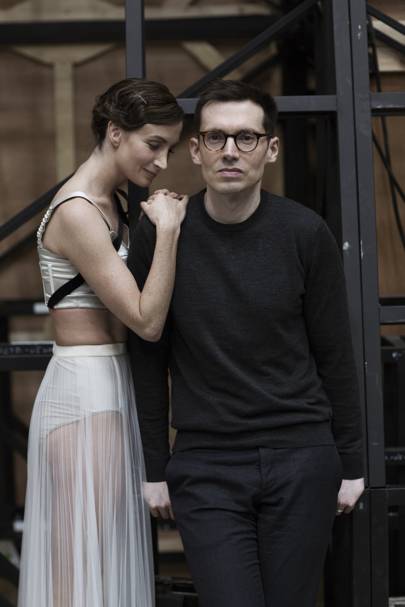There’s just one week to go before the opening night of Christopher Wheeldon’s new single-act ballet, Corybantic Games, on March 15 and the dancers are in the middle of their first stage call. “It’s almost like a new beginning because it’s the first time anyone in the artistic and creative teams gets an image of how [the production] will look on stage,” principal Lauren Cuthbertson tells me as we emerge from the Margot Fonteyn Studio at the company’s Covent Garden headquarters. She has just practiced her pas de deux - a dance consisting of sculptural and delicately interlacing movements - with fellow principal Ryoichi Hirano, as Wheeldon fine-tuned their every lift, pirouette and développé. “Until now we have been in our practice clothes in the studio - a completely different setting. It’s always a bit stressful because there can be so much change. The hair changed twice already; I was side stage with my hair being undone and sprayed and pinned all over again.” Yet amidst all the brouhaha, this morning Cuthbertson says she experienced a “magical moment,” as she paused to take stock and realised: “Wait, I’m standing on the Royal Opera House stage, wearing Erdem.”
Steered by the choreography and Leonard Bernstein’s orchestral score Serenade (after Plato’s Symposium), the costumes contain a multitude of subtle contrasts that - especially en masse as an army of elegant kouros - is a striking sight and a noticeable departure from the lace and brocade of Erdem’s runway designs. The ballerinas' champagne-coloured silk satin bodices and high-waisted pants are tailored with angular seams emphasised by boning, and their delicately pleated tulle skirts - which cascade down to the ankles - have velvet ribbon painstakingly hand-stitched along the hem. The men’s leotards meanwhile are such a low denier they almost appear naked above the waist of their white tights. All the dancers’ torsos are sheathed in different black velvet harnesses; a graphic detail that resembles the spontaneous drapes of a chiton.
“I love the idea of examining the time when the piece of music was created (the 1950s) and combining that with something very Grecian,” Erdem Moralıoğlu says when we meet in the Royal Opera House’s plush, red velvet-clad Bedford Retiring Room. “The lines are very bold; it’s almost like I’ve drawn over the body with a marker. I also found myself looking at previous collections,” he continues. “The bustier shape from spring/summer 2018 that had so much to do with 1950s underpinnings, and even the latest autumn/winter collection, with all these hand-pleated skirts, worked its way into the show.”

From Christian Lacroix’s elaborate tutus for the Paris Opéra Ballet, to Dries van Noten’s casual outfits for Anne Teresa De Keersmaeker’s Rain, fashion-dance partnerships have a rich history, and Wheeldon’s collaboration with Erdem for Corybantic Games continues this legacy. When it was time to choose a designer to create costumes for the 21 dancers, Moralıoğlu seemed a natural fit for Wheeldon. The pair met six years ago when the designer invited the choreographer to his fashion shows, having seen a number of his ballets - including A Winter’s Tale (an adaptation of Shakespeare’s romance) and abstract work After the Rain. It’s also not the first time Cuthbertson has been dressed in Erdem - she wore one of his gowns to attend the Laurence Olivier Awards in 2015 - so this collaboration is born out of friendship as well as mutual admiration. But why was he drawn to this ballet in particular? “I think it was the idea of doing a completely new piece that was modern - something that hasn’t existed before,” he says.
Designing ready-to-wear is a somewhat different challenge to designing costumes for ballet. For one, fashion is about enabling someone to express themselves through clothes. Costumes, on the other hand, help a dancer embody a character. Then there are the practical requirements. “Someone being able to lift their leg above their head wasn’t something I had to think about when I was designing my last collection,” Moralıoğlu says. “The costumes have to [withstand] being washed after every performance, each costume is custom made to the dancer’s body, so the fittings are extraordinarily rigorous and last minute because you are working around their schedule.” During the stage call, the loose velvet ribbons attached to the harnesses hinder the dancers' movements but, before long, Moralıoğlu and the costume team find a solution: small concealed loops to hold the ribbons in place without being too restrictive.
As for his foray into designing garments for men, can we expect to see Erdem menswear showing up on the London Fashion Week schedule anytime soon? Not for now - he’s sticking to womenswear - unless, he adds with a laugh, “it’s for dancers.”

No comments:
Post a Comment